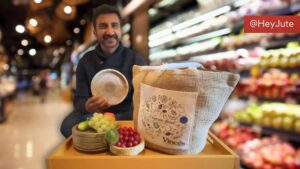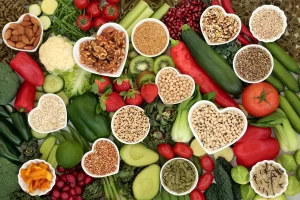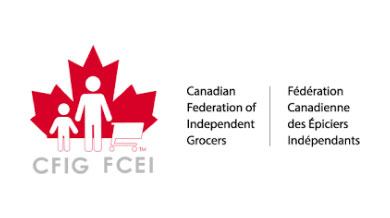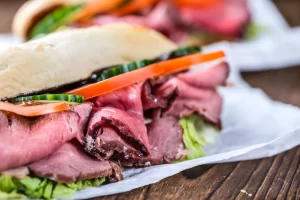
How to Eat Healthy with Food Prices Rising in 2016
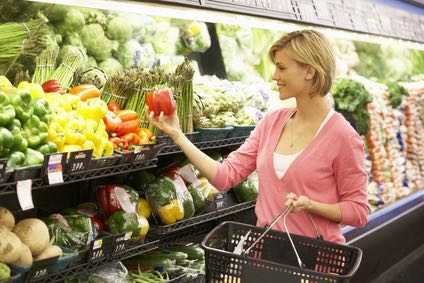

The solution: We all need to re-consider how we buy our fresh food!
Firstly, what is causing this rise in food price?
Currently we are experiencing inflation in the price of fresh food as a result of two things:
- The plunging Loonie (CAD)
- The extended drought that has hit South Western USA, particularly California.
Because of Canada’s climate, we are forced to purchase most fruits and vegetables from outside of Canada where they are priced in either USD or the Euro. The low CAD means that purchasing the same items as one year ago is costing importers 20-30% more today.
To put that into perspective – if you are used to buying bananas at $0.99/lb, the low CAD would re-set this price to $1.19-$1.29/lb.
With Canada’s climate, we really do rely on California to supply us during the winter. The multi-year drought occurring in California, has led to significantly smaller yields from one of the largest growing regions in the world. They are just are not getting enough water to yield the same quantity of crops that had been the norm. Ultimately, less product to the marketplace pushes prices up – similar to what happened with Cauliflower this Christmas where the price skyrocketed to $8 a piece because there was so little available. For more on the California drought, click here.
So how do we shop smart when prices go up?
When prices rise we tend to buy on sale or buy in bulk to get a deal. You will see these items marketed as “Family Size” or “Super Packs”. Sometimes the savings can be worth it but other times it can only be 0-5% less than regular portion sizes.
How do size and grade impact sale price? Is bigger always better?
Often times the size of sale items will be small and the grade will be B to C quality. If it’s a pre-packaged option, it is often larger in size, but the result however is often that once you trim the peel, or clean out the pit and unusable parts, the yield of edible produce is not great. Grade B and Grade C produce can also deteriorate more quickly as the produce may be older or have punctures and marks that has allowed air to get inside the produce, decreasing its shelf-life.
Sometimes when we buy on special we do not buy products that lend to our tastes and appetite, but rather what appeals to our wallet or appears to be “value”. Once that produce goes in our fridge it often gets left there. Our favourites get consumed and slowly but surely, the “deal produce” goes past its prime and ends up half-eaten or worse – in the organic waste bin.
Try this simple test to see how you can shop smarter!
Mark down all the fresh produce you buy within a two week period on a piece of paper. Write down how many pieces you bought and what it cost you.
For example – Royal Gala Apples, 4 pieces, $3.75.
Create three columns next to this and name them GOOD, OK, GONE BAD.
As you consume the products when they are at their best mark it GOOD. As time goes by and the product starts to have some unusable parts, mark it OK. Finally, if some of the product goes in the organic waste bin, mark it in the GONE BAD column.
If you find you’re mostly in the “Gone Bad” column, I would challenge you to rethink how you buy fresh foods; buying them in smaller quantities and more often. Just think of how much money you could save!
Changing our buying habits: Buying less more often and eating more in-season.
You may need to shop in smaller quantities more often, but I can assure you that the results show that people who shop less often for fresh products see more of their hard earned money end up in their stomach and not in the compost.
We know that eating healthier is always on our minds with New Year’s Resolutions and often the biggest obstacle is finding fruits and vegetables that are fresh, tasty and in season.
Eating seasonally is one of our best recommendations for a healthy diet lifestyle as it ensures you are receiving the most nutrients from your calories each day. Seasonal produce also means longer shelf life at its prime.
In-Season Veggies: Cabbage, Carrots, Cooking Greens, Leeks. Parsnips & Turnips, Spinach
Fruits: Fall Harvest Apples, Pomegranates, Kiwis, Oranges & Grapefuit, Pineapple, Pears
As always, we welcome your questions and feedback. You can leave a comment right here on the site or head on over and join in the conversation on Facebook (remember to ‘Like’ the page) and Twitter – (don’t forget to follow us there too).
If you haven’t already signed up to receive our weekly news delivered right to your inbox (including the blog, our weekly product feature, signup for our Coterie Program, and our recipe of the week), you will find the signup by clicking here.
Giancarlo



